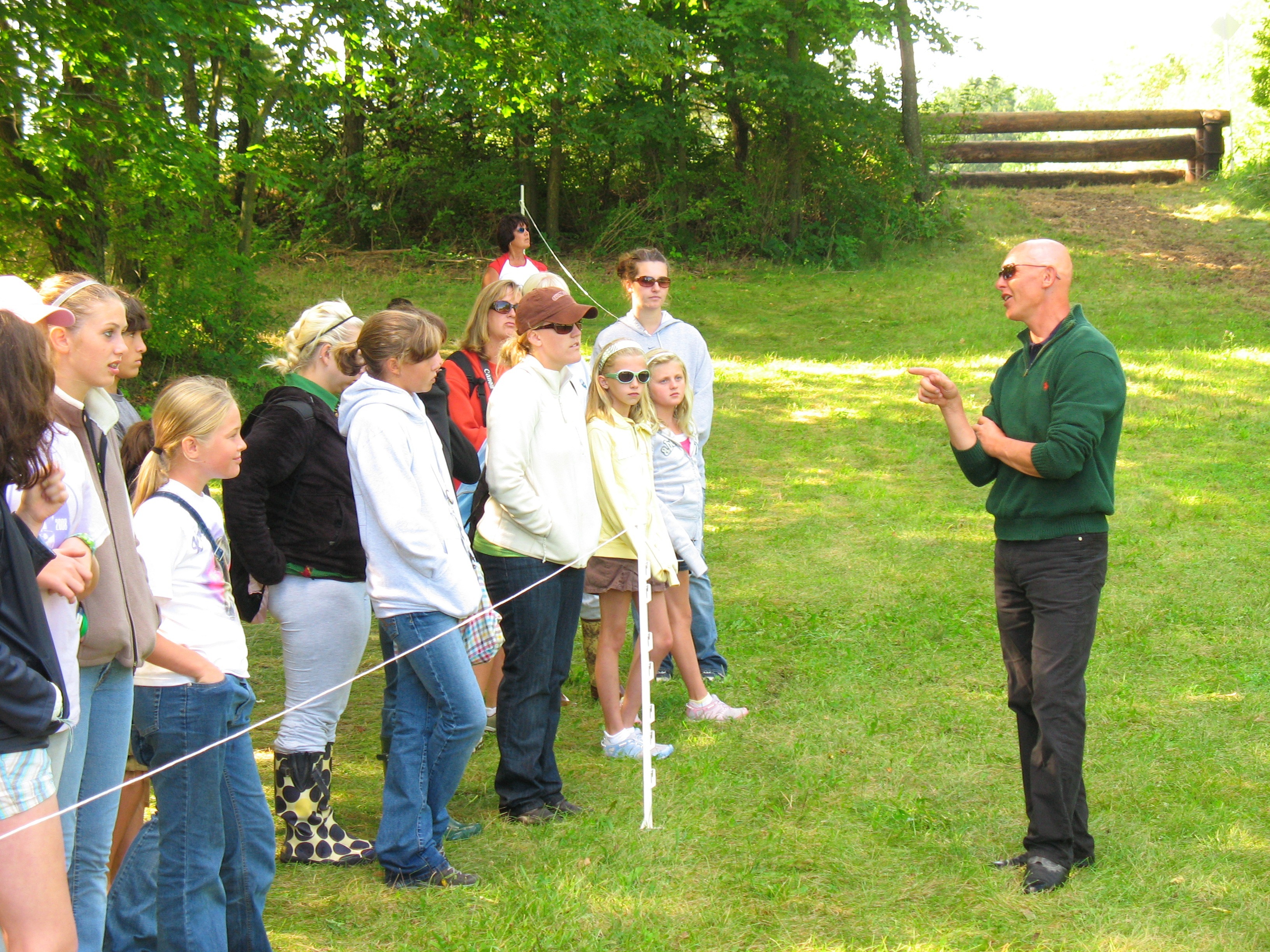Safely riding a cross country course demands much more from riders and horses than screwing up the courage to run and jump outside the confines of an arena. The USEA is now offering educational clinics to address the crucial skills required to ride cross country safely. The USEA Area VIII Cross Country Safe Riding Clinic, in Richland, MI, August 25, was one of the first.
The purpose of the clinic, according to the flyer, was “to confirm and improve the spectators’ understanding of and eye for safe and effective cross-country riding techniques.” Spectators got to stand alongside three highly-regarded event riders – Robin Walker, of Grass Lake, MI, Leslie Law, from Bluemont, VA, and Darren Chiacchia, from Springville, NY – and gain insight from their comments about the performances of eight demonstration riders.
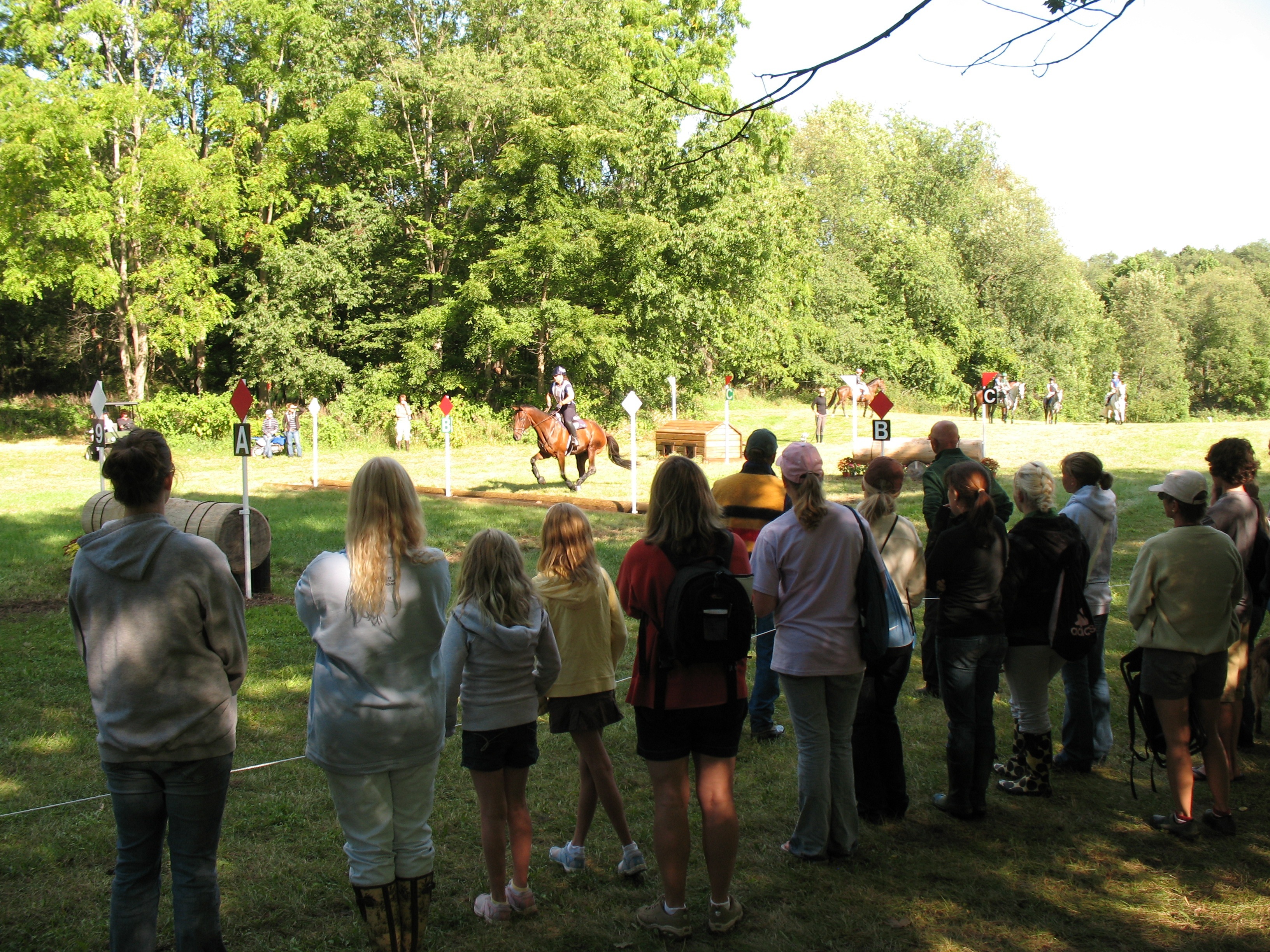
Walker, Law, and Chiacchia had each competed several horses at Richland Park Horse Trials over the weekend, and graciously stayed over for the Monday morning clinic. The crowd of about 65 riders and trainers from several Midwestern states listened as they explained and discussed the essentials of galloping to, rebalancing for, and jumping over various cross country fences.
Riders ranging from Beginner Novice to Preliminary had a rare opportunity to school Bob and Kay Willmarth’s Richland Park cross-country course while demonstrating how to ride varying terrain, a water complex, a coffin, banks, corners, and more.
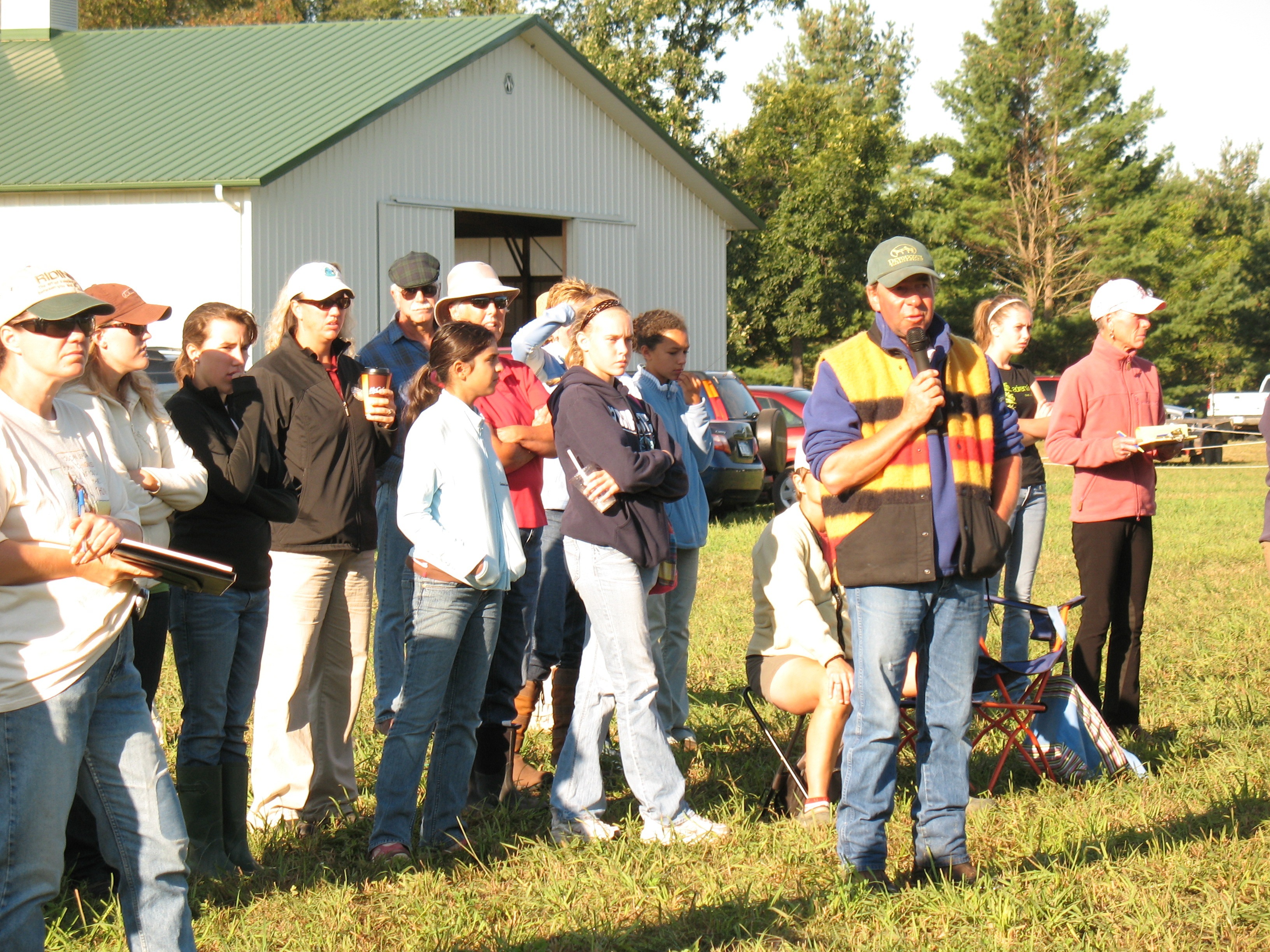
In his opening remarks, Robin Walker described how – before ever heading toward a fence – the rider and horse must be able to balance, stop, steer, turn, ride a straight line, and go forward. Only once these elements are suitably mastered should jumping begin. And, he said, the rider must honestly assess “is it easy, or is it a wrestling match?”
The trio of clinicians spent considerable time, too, explaining specifics about the three phases of jumping an obstacle: galloping, preparation, and maintenance. A good gallop is a skill unto itself, but at the least, said Walker, “the rider should be able to gallop without getting in the horse’s way.” The “maintenance” phase occurs in the five or six strides prior to take-off, when the horse has achieved an appropriate jumping frame for the obstacle. Ideally, there are no further adjustments to make. The “preparation” phase is that period between galloping and the maintenance zone when the rider and horse achieve the best possibility for a successful jump. A horse that is well-prepared to jump, said Law, “has to be in front of the leg. Too slow is as dangerous as too fast. It’s about jumping at the right pace.” In other words, safe cross country jumping is much more than a mad dash around the field.
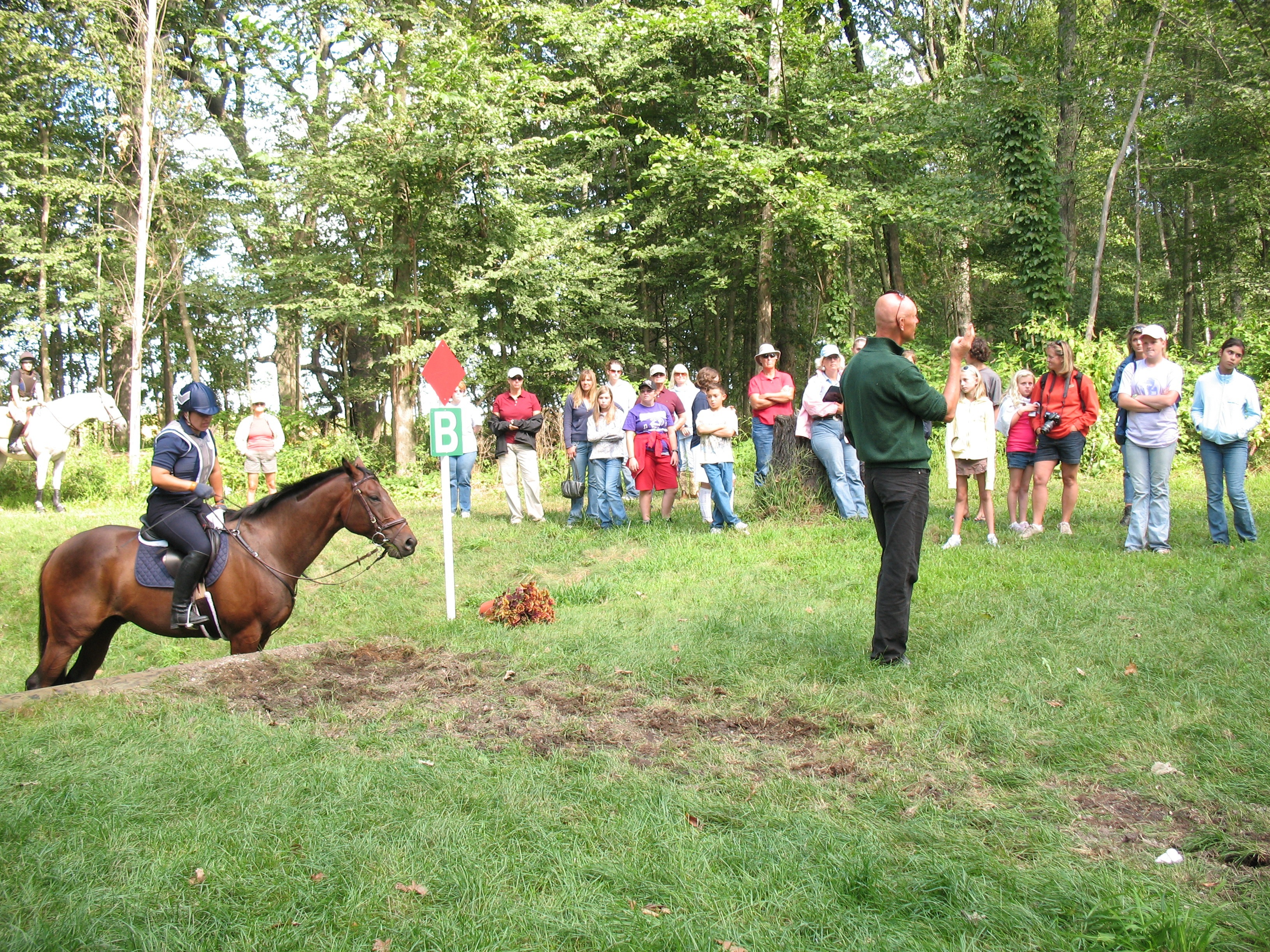
The clinicians helped the audience see the difference as riders demonstrated the preparation phase to transition from the flat, forehand-heavy gallop to a position where the horse could jump safely, with nose and poll elevated and hind end underneath. They also acknowledged the need to begin preparation sooner on a green horse than on a seasoned campaigner, and how a green rider should expect, too, to take longer to do these things than an experienced rider, even when riding an experienced mount.
In some instances, the crowd had a chance to see what happens when preparation doesn’t flow into a maintenance period. When one rider held a horse too much to the base of several jumps, the clinicians worked on improving her maintenance phase. The results were a happier horse who jumped much better.
“Preparation that never moves into the maintenance period takes the confidence out of the horse,” said Chiacchia. Law agreed (pictured above right), saying, “Once the horse has its head and neck, it can help the rider see the distance because it has the freedom to make adjustments.”
“The whole situation is very fluid,” said Walker. Effective and safe cross-country riding “is all about identifying the critical priorities in the right order.” Law agreed that the balance, pace, and rhythm one rides to fences varies for many reasons, including the age and experience of both the horse and the rider, the terrain, the light, the specific sort of obstacle, and more. In addition, said Chiacchia, much depends on the temperament of the individual horse. For example, some young horses are mentally able to take on bigger challenges more quickly then others. Such things as bravery, intelligence, and willingness play as much a role in how quickly an equine athlete can cope with increasingly complex skills as physical development.
There seems to be, said Law, a lot of pressure to move up the levels, explaining that when a person upgrades, it’s better to first jump the jumps, then work on the time. “Success is less about making it around the course than making it around well,” he said. “It’s not our right to ride the optimal time. It’s our right to ride safely.”
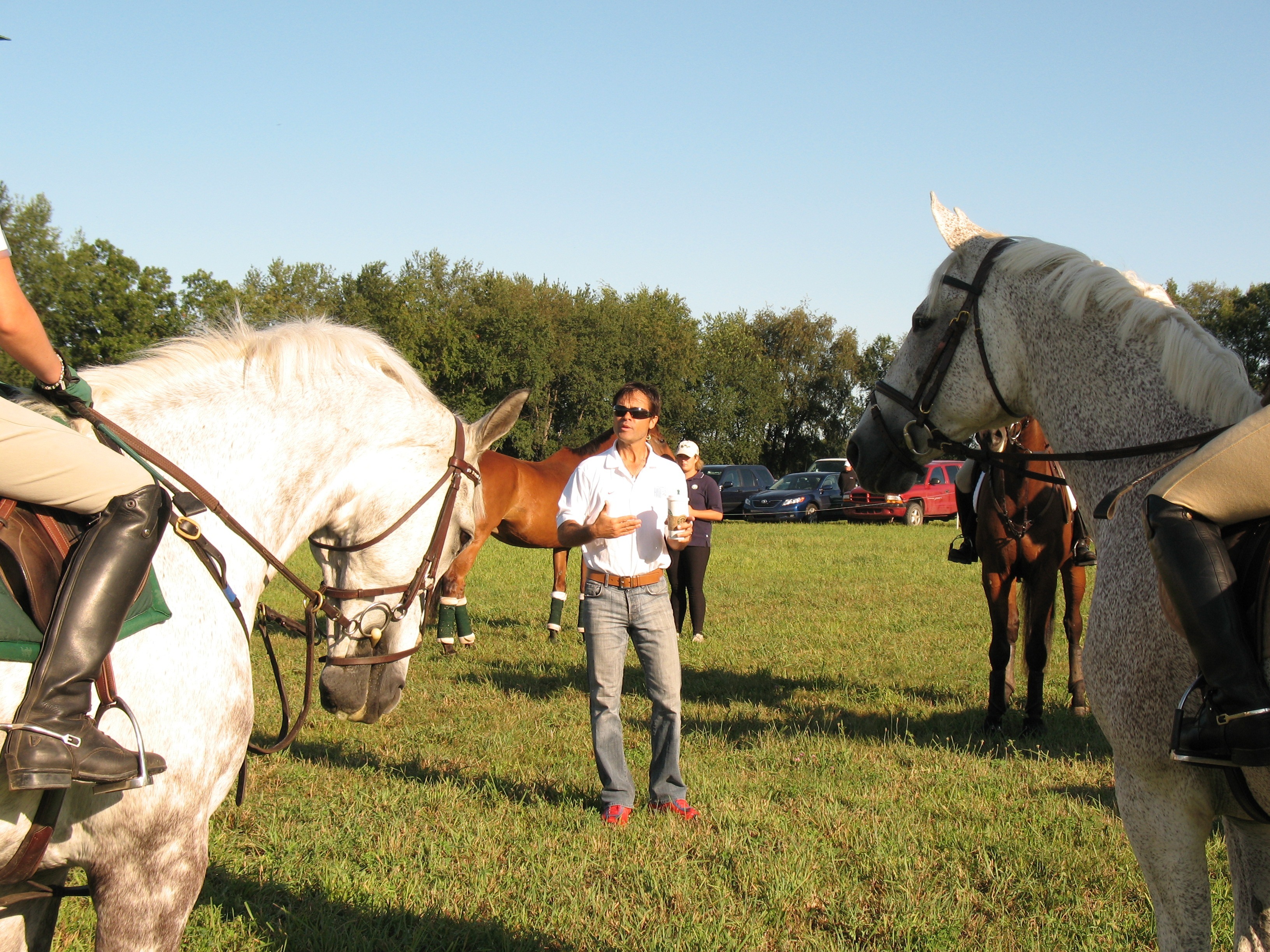
Much was also said about preparing a horse not only for the current level of competition, but for the future. “The most important part of the cross-country horse, besides the legs,” said Walker, “is what’s between the ears.” A good trainer or rider will always build a horse’s confidence to cope well with the various questions it encounters on a cross-country course. At the water complex, for example, the riders first walked their horses through the water, then trotted over a small bank and out over an even smaller step up. Several horses stepped up too casually, and the riders were instructed to ask their horses to jump up more correctly. As Chiacchia said, you want a horse to not only jump, but to jump well – “that’s what gives them the confidence to move up through the levels.”
